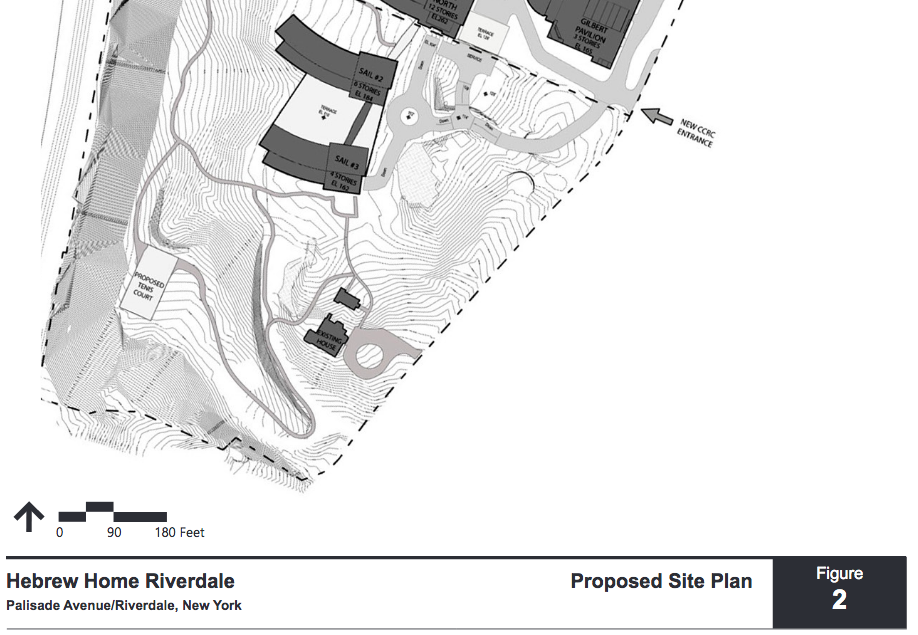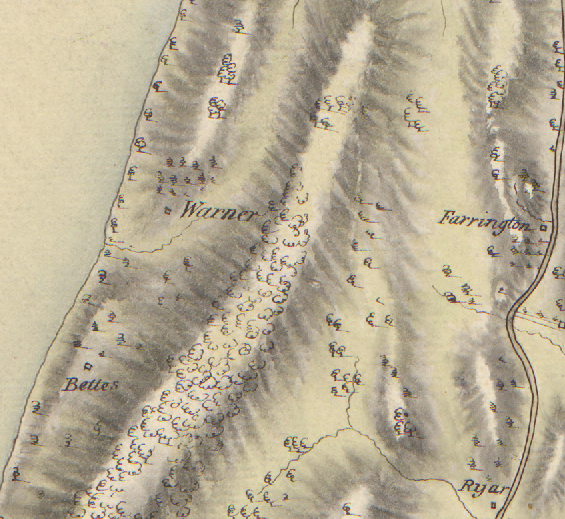Home › Forums › Everything Else related to Kingsbridge, Riverdale, and Spuyten Duyvil › Hebrew Home Development – Incomplete Archaeological Study
- This topic has 0 replies, 1 voice, and was last updated 4 years, 1 month ago by
 ndembowski.
ndembowski.
-
AuthorPosts
-
-
November 5, 2021 at 8:08 pm #2224
The development of the Hebrew Home property came under criticism from local residents, who were unhappy with the proposed heights of the buildings that were to go up. To my knowledge they have not begun construction despite having reached a compromise:
I just looked over the Phase 1A Archaeological Survey for the project and the following statement stood out to me:
There is no documentary evidence supporting Colonial or Revolutionary War activities on the project sites. By the 1800s, however, both sites were being used as parts of residential estates. The estate activities appear to have been non-agrarian though kitchen gardens were noted in the South Site (Lot 55) documentation.
It is too bad that the authors did not contact the Kingsbridge Historical Society for some historical background as the footprint of the “proposed site plan” definitely has a colonial and revolutionary history. Check out the below map from the archaeological report showing the southern section of the property.

Along the southern border of the property in the above map, you will notice a depression that is a ravine leading to the railroad tracks and the banks of the Hudson River. It was along this ravine that the Warner family had their home in colonial times.

A clipping from this map. 1781. Note the “Warner” homesite in the center just above a rivulet that empties into the Hudson.
The Warners came to the area in the 1700s although they did not initially own the land. They were tenant farmers, who rented the property from the Philipses. In the years leading up to the Revolution, it was John Warner along with his family and enslaved African servants who lived at the southern end of the Hebrew Home property. On March 18, 1776, John Warner was elected Captain of the Yonkers Militia Company. He replaced the previous captain, John Cock, who was outed as harboring loyalist sympathies.
How far back before the Revolution did the Warners live there? It is hard to tell but the wills of John Warner’s father and grandfather both indicate that they were living in “Philipsburg,” which was what North Riverdale would have been called in those days. The people named in those wills as witnesses were locals. So, perhaps the Warner home predates the Revolution by a number of decades.
After the Revolution, John Warner’s landlord fled to England and Warner bought the property, which he passed down to his son, Aaron Warner. When Aaron died, his executors mapped part of the Warner property in preparation for sale. The below map snippet (from 1837) is taken from a map that was unmentioned in the report. It is held by the Bronx Topographical Division. It depicts the southern section of today’s Hebrew Home property:

As you can see, there are a few “dwelling houses” on the north side of the ravine by 1837. Perhaps the large one on the right was the colonial era Warner house. It shares the same historical footprint as an old Victorian that still stands on the site. None of these buildings are mentioned in the report, which does not mention any buildings before the 1840s.
So the archaeology report was inaccurate. There is “documentary evidence supporting Colonial or Revolutionary War activities on the project sites.” The problem seems to be that the earliest map referenced in the report is dated 1867, which is obviously about 100 years too late to find such evidence.
It does not look like there are plans to build any large buildings on the southern part of the property where the Warners had their home. However, there is a “proposed tennis court” shown on the site plan for that area. Hopefully, artifacts are not lost in the construction.
It is clear from the references in the archaeological report that the authors were in contact with the Bronx County Historical Society to assist with their research. I am surprised that they were not directed to resources that would have prevented this oversight.
-
-
AuthorPosts
- You must be logged in to reply to this topic.